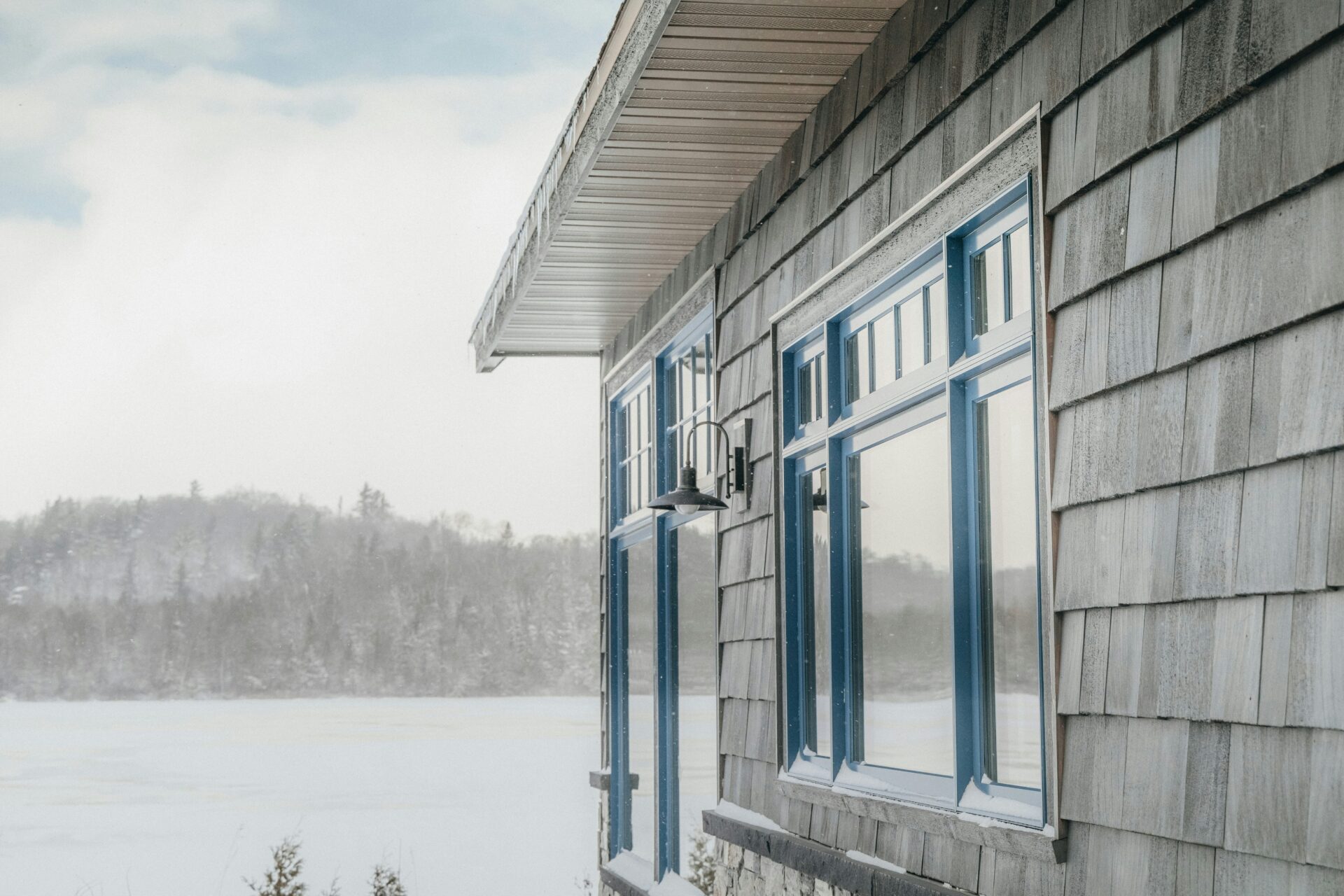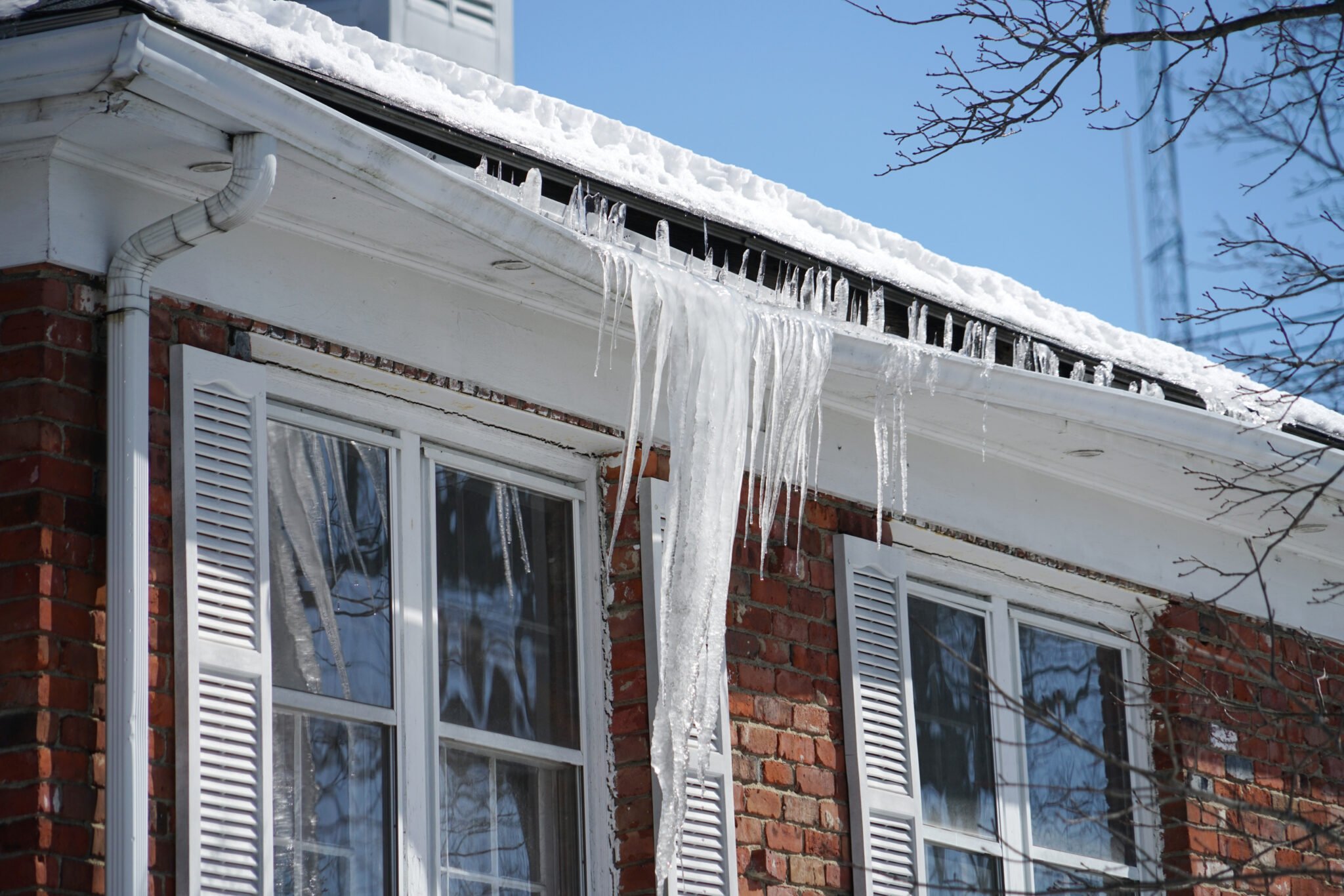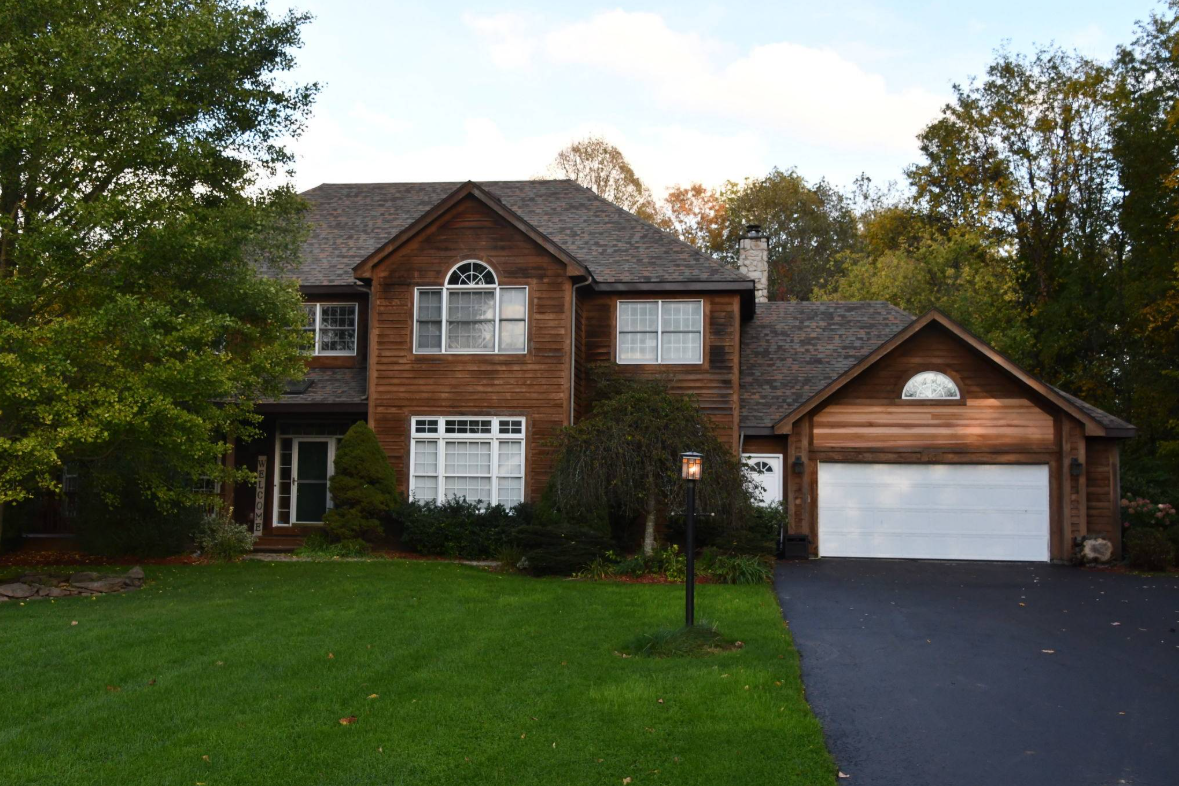Winter weather can be harsh on homes, and roofs are particularly vulnerable. While severe snowstorms and ice storms can cause significant damage, less intense winter conditions can still take a toll.
In this article, we'll explore how snow and ice can cause roof damage and discuss strategies to protect your home from winter weather's impact.
Freeze-Thaw Cycle
A “freeze-thaw cycle” is a recurring weather pattern. During this cycle, the temperature dips low enough to freeze water and then increases high enough to melt again. Even small fluctuations can significantly impact infrastructure, including roads, sidewalks, and buildings - like your home’s roof.
Shingle Damage
Asphalt roofs are particularly vulnerable to the damaging effects of the freeze-thaw cycle. As temperatures fluctuate above and below freezing, water can seep into the shingles. When this water freezes, it expands, causing cracks in the shingles.
Over time, repeated cycles of freezing and thawing can worsen these cracks, eventually leading to leaks. Additionally, the expansion and contraction of the shingles can disrupt their spacing, further compromising the roof's integrity.
Condensation
Metal roofs are more resistant to fluctuation but can be susceptible to condensation. While this is not overly common, it’s more likely to occur in metal roofing systems that do not have good insulation and venting.
Condensation can develop when the temperature rises outdoors and the warmer air comes into contact with the roof’s cold metal. As the air begins to cool down, it releases some water that turns into liquid droplets, forming condensation.
Ice Dam Formation
Ice dams form when melting snow on a roof refreezes at the colder edges. This ice buildup can block proper water drainage, causing water to pool and back up under the shingles. Trapped water can then seep into the attic, damaging insulation, drywall, and ceilings.
The weight of the ice dam can cause additional damage by loosening or tearing off shingles, especially around the eaves. Over time, prolonged water damage can weaken the roof's structural integrity.
Heavy Snow Accumulation
Even if your region doesn’t get a massive snowstorm, snowfall can accumulate throughout the season. This can be potentially dangerous for your roof and the rest of your home.
Structural Stress
Snow, when especially wet and heavy, can significantly increase the load on a roof. This added weight can stress the roof's structural integrity, potentially damaging critical components like rafters, trusses, and supporting walls.
The roof’s weight can overwhelm the rafters (the beams that support the roof deck), leading to sagging or even collapse. The trusses forming the triangular framework of the roof can be compromised, causing the roof to cave in. The supporting walls, which bear the roof's weight, can also be strained, leading to cracks or structural failure.
Heavy Tree Branches
Tall trees near your house can pose a threat to the roof. When heavy snow accumulates and weighs down branches, it can cause them to sag. If a limb droops low enough, it could come into contact with your roof, scratching or scuffing your shingles or panels. A snow-laden branch could even become so heavy that it breaks, falling on - or through - your roof.
Blocked Roof Vents
Heavy snow can directly cover your roof’s vents, preventing proper airflow. Similarly, high winds can create snowdrifts around vents, blocking airflow. Without adequate airflow, a buildup of warm, moist air can develop. Then, as the humid air comes into contact with the cooler surfaces of the roof and attic, it can create condensation. This moisture can lead to mold, mildew, and wood rot.
Poor ventilation from blocked vents can also create a buildup of exhaust gases. These toxic fumes, including carbon monoxide, are then forced back into your home. As a reminder, carbon monoxide detectors should be installed on every floor in your home and tested regularly.
Warning Signs of Winter Roof Damage
If you think your roof has sustained damage from snow or ice, look for some of the common signs below.
Missing or damaged shingles: Check for missing, cracked, curled, or buckled shingles, especially around the edges of the roof.
Drooping ceilings: If heavy snow has compromised the structural integrity of your roof, ceilings may begin to droop due to weakened rafters or trusses.
Large icicles: Look at the icicles along the edge of your roof near the eaves and gutters. If they are large with thick bases, it could indicate ice damming.
Water damage: Look for leaks and stains on your ceilings or walls. These are often signs of roofing problems.
How to Prevent Winter Roof Damage
If you live in a region with cold or snowy winters, consider taking preventive actions to protect your roof. The top recommendations are outlined below.
Proper ventilation: Ensure your system functions efficiently for proper intake and exhaust.
Enough insulation: Be sure your attic has enough insulation to prevent heat loss through the roof.
Clean gutters: Leaves, sticks, and other debris should be removed from gutters and downspouts. This allows melted snow and ice to flow into them, preventing a backup of water pooling on your roof.
We recommend a professional gutter cleaning at least twice a year. A seasoned expert can clean, inspect, or replace your gutters if needed.
Snow removal: To reduce the weight bearing down on your roof, snow can be swept or pushed off using a rake or broom.
Trim trees: Trees should be trimmed near your roof to prevent damage. Overhanging limbs can fall onto your home from heavy snow, and overgrown branches that touch a roof can scratch shingles, leading to curling, peeling, or cracking.
We recommend contacting Woodeez Tree Service for professional tree trimming and tree removal.
Find a professional: Schedule an appointment with a professional. A good contractor can conduct a thorough inspection to evaluate the surface of your roof, as well as its ventilation and insulation. An expert can also inspect your gutters.
Oaks Roofing & Siding: Quality You Can Trust
At Oaks Roofing & Siding, we offer various dumpster sizes to meet your needs. Our dedicated representatives are always here to answer questions so your rental process goes smoothly. Call or contact us today, and we'll be happy to help.



